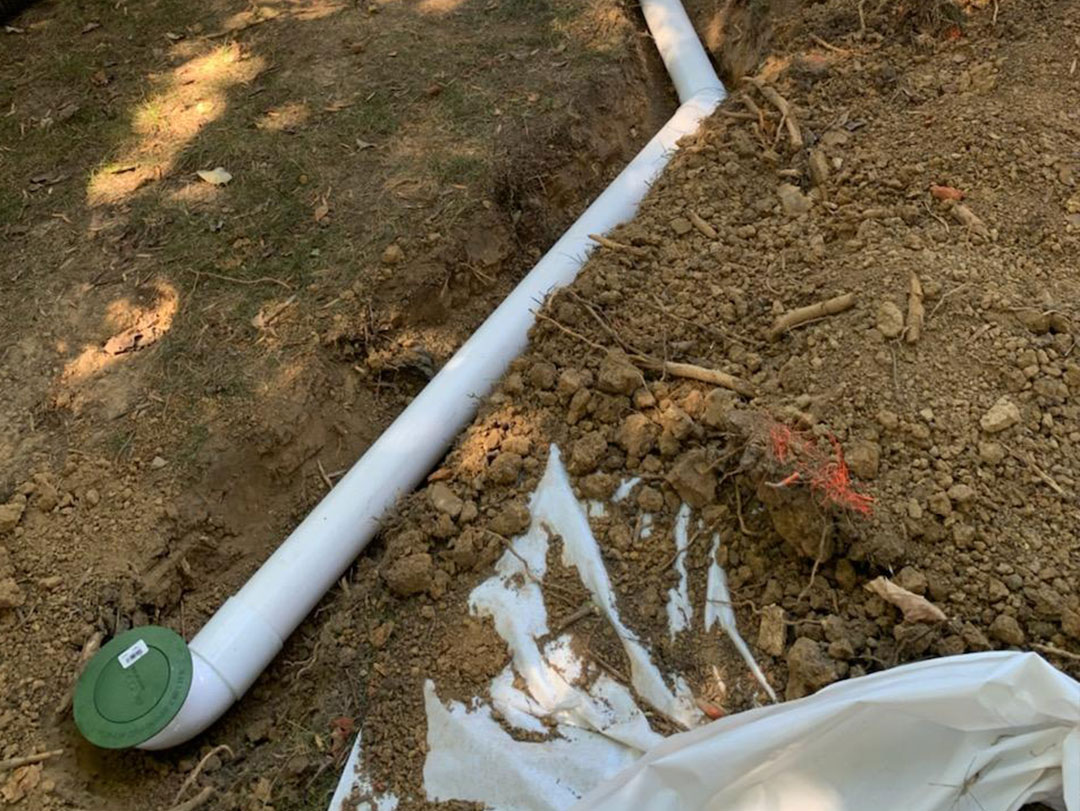During construction or a renovation, it’s important that when establishing the final grading plan of the home to make sure that water will move down and away from the foundation and exit the lot to an approved storm drain system, otherwise your homeowners could end up with home improvements and repairs down the road they didn’t bargain for.
A grading plan refers to the landscaping of the house site and soil elevations. If you don’t establish a proper grading plan and the lot isn’t graded properly, water from storms and irrigation can run back toward the home and cause moisture issues at the foundation wall, or saturate the soil next to the foundation causing hydro static pressure against the wall, which can cause foundation cracks, structural damage and even soil erosion, and leave a home in need of repair.
Improperly diverted rain and snow melt runoff can cause erosion and flooding for adjoining lots, leaving the homeowner, and the builder, liable for damages for not following proper building safety standards.
Most drainage plans are simple to implement, and are part of the original design of a new home landscaping plan.
Over time with the addition of other homes in a neighborhood, slight topsoil erosion, gutters overflowing, trees growing larger and dozens of other factors the original drainage pattern changes and
can create water standing in the yard all the way up to water now being led right into your crawlspace ore basement.
The best practice when working on the finished grade is to follow a grading plan prepared by an experienced grading and drainage contractor. A typical grading plan will show the slope of the lot in 5-foot increments, and can provide the site supervisor with the specific information needed for inspecting and managing the grading trade contractor. By closely following the grading plan, the builder can reduce the risk of callbacks and can better control costs associated with hauling or removing fill from the site.
Here are a few other things to think about when getting ready to inspect the final grade:
- One of the most important is to try to do most of the grading during the dry season to prevent erosion of the soil during construction and prevent the need to regrade later.
- If too much of the foundation is showing above grade, or if the final grade is too close to the wall cladding, future moisture issues can occur and can create a path for termites to enter the home. Proper back fill near the foundation is critical.
- All of the soil that is excavated from the site can be reused to help establish final grade. Be sure to cover extra stockpiles of soil or spray the piles with hydraulic mulch to help prevent erosion and excessive runoff.
- Local drainage systems and ditches in Kentuckiana are overseen by louisvillemsd.org
Since all lots are not flat then a grading plan has to be designed to fit your property exclusively. The amount of slope required depends a lot on the volume of property to be drained however a minimum of 1% slope or 1’ per 100’ is the minimum that will be needed to keep standing water from accumulating on your property.
Many times a slope in the grade alone is not enough and the installation of a French drain, a yard drain, a channel drain or dirt swale will be some of the choices a contractor can use to keep water moving on a piece of property.
NDS Drainage System has a selection of the components that are used also ADS Pipe and standard sewer and drain pipe, slotted drain tile, washed gravel, dry creek bed and non woven landscape drainage fabric.
The question to always be asked is where do we want the water to drain to?
The answer will start to reveal the drainage plan and the system above and below ground to direct the water to that location.
It is important to take into consideration all sections of your property and create a plan that will drain the entire lot. Even a relatively large flat area can have assistance with drainage with the installation of a dry well.
A dry well is a structure installed underground to create a holding area for surface water to drain in a rainfall to be distributed underground over time. The Charlotte pipe Company charolettepipe.com has a line of schedule 30 sewer and drain pipe that are ideal for the underground drainage industry.
